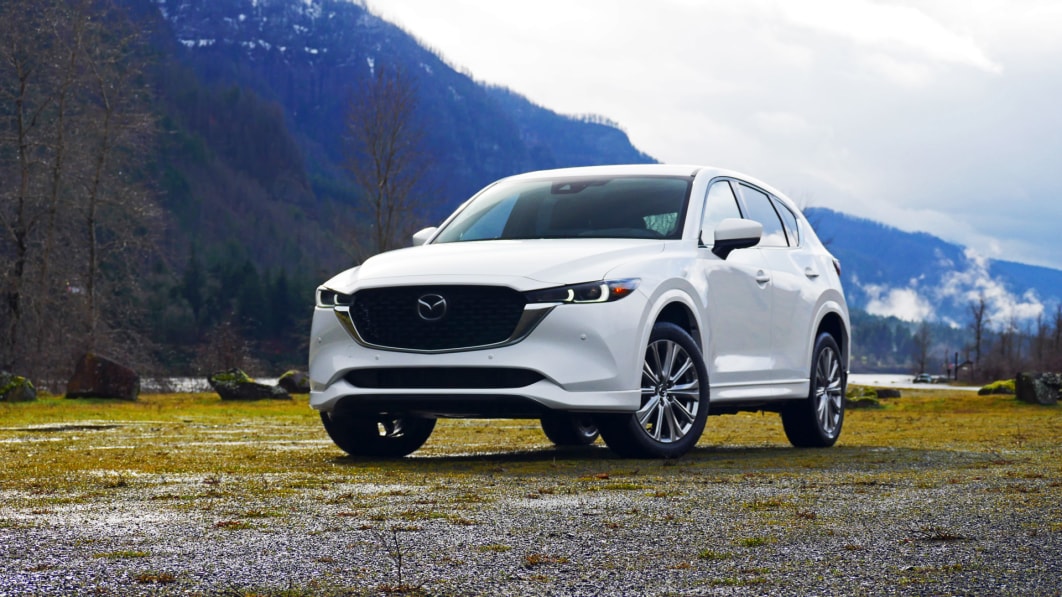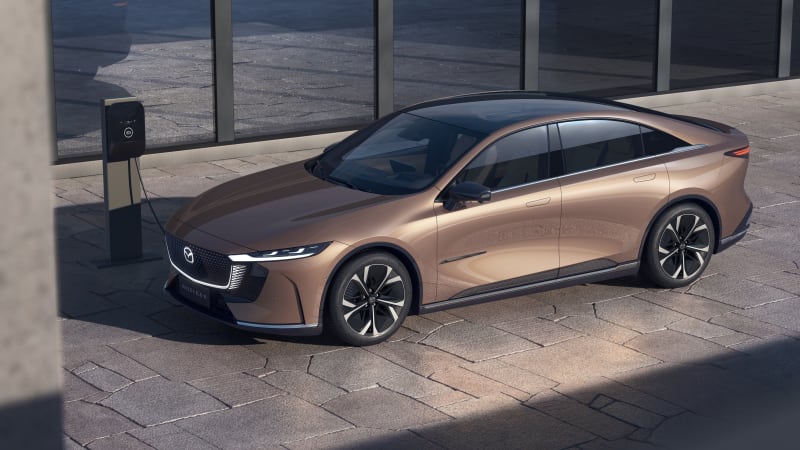Pros: Engaging and refined to drive; luxurious interior; strong turbo engine; good looks; top crash scores
Cons: No hybrid available; polarizing infotainment system; a bit small; not as good as CX-50
What exactly do you get with the number 0? Usually, by definition, nothing. But when it comes to Mazda’s pair of compact SUVs, the 2024 Mazda CX-5 isn’t as appealing as its newer sibling, the CX-50. Both have the same list of pros and cons, and both represent sportier and more premium takes on a segment that mostly consists of family-oriented or outdoor adventure entries. They’re even similar in size and offer the same engine choices. What the heck’s the difference, then?
Basically, the CX-50 was designed and engineered for the North American market versus the more globally minded CX-5. It therefore offers all the virtues of the CX-5, but is a smidge bigger, more refined and capable of going further off-road. We think it looks better, too. Oh, and it’s made in America versus the made-in-Japan CX-5. Why opt for the CX-5, then? Apart from a slightly lower price, we’re left scratching our heads. While we theoretically like it every bit as much as before the CX-50 came out, and still appreciate that it strikes a more emotional chord than the CR-Vs and RAV4s of the world, we just like the CX-50 more. Why go for option 1b when 1a is just sitting right there?
Interior & Technology | Passenger & Cargo Space | Performance & Fuel Economy
What it’s like to drive | Pricing & Trim Levels | Crash Ratings & Safety Features
What’s new for 2024?
Every CX-5 now comes standard with touchscreen functionality, but only when using Apple CarPlay and Android Auto. This is a significant functionality improvement, and one not shared with every Mazda. Other changes are minimal, starting with the disappearance of the base S trim — a popular move for automakers lately, shedding the low-hanging, questionably profitable fruit. This makes the CX-5 $2,600 more expensive to start after factoring the price increase on the S Select trim that’s now the entry-level model. There are changes further up the trim order, too. The Carbon Turbo returns, recalling the Carbon Turbo Edition that hasn’t been seen since the 2021 model year. Mazda rolls out new color combos for this trim, the 2024 Carbon Turbo offering a special Zircon Sand Metallic paint for $450 and a Terracotta leather interior mixed with black suede. As before, it slips in as the most accessible variant with the turbocharged 2.5-liter, below the current Turbo that’s renamed Turbo Premium for 2024, and the top-tier Turbo Signature.
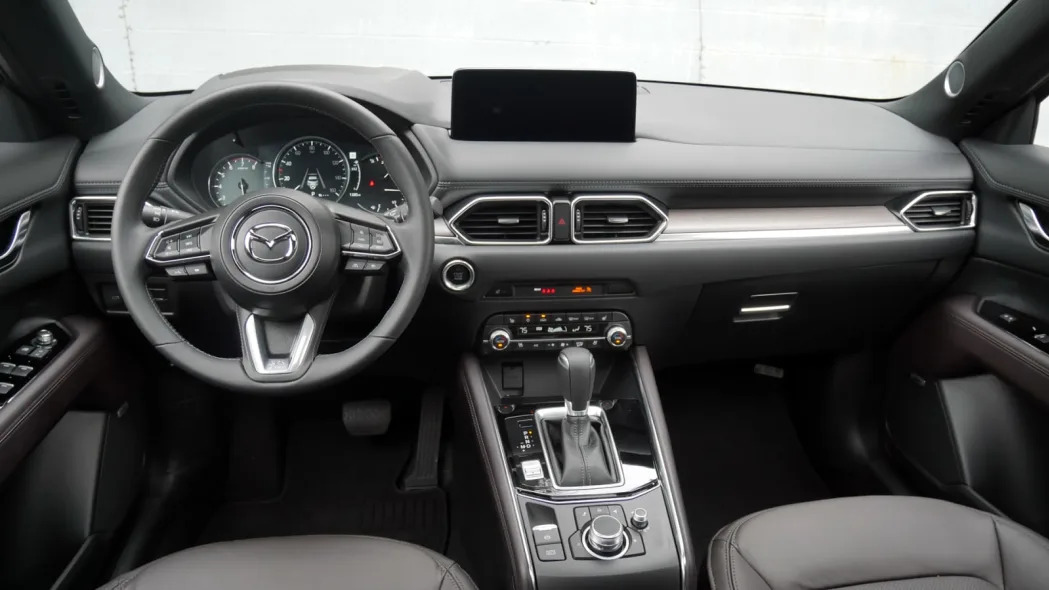
What are the CX-5 interior and in-car technology like?
The CX-5 boasts a handsome, upscale design with materials to match, exuding a premium vibe that none of its direct competitors can match (well, besides the CX-50). Its top trim levels have seats that are heated all around and ventilated up front, plus high-quality leather with contrast French stitching. The Signature gets unique Catarra Brown Nappa leather, shown here. The padded and stitched pleather on the dash, doors and center console are a nice touch too, as is the alloy trim — especially the air vents that seem to jut out from within the dash. Admittedly, fancier touches like the Signature’s wood-look trim are absent on lower trim levels, but the overall interior ambience remains more premium and stylish than those of most competitors — especially something like the Toyota RAV4 and Subaru Forester that are going for more of a rugged, utilitarian vibe.
Mazda’s tech interface is distinctive in that it uses a center console knob controller rather than a touchscreen. This isn’t Mazda being behind the times, it’s a conscious effort to reduce driver distraction. The dashtop screen is large and easy to see while running a relatively simple and quick user interface. The knob that controls it is big, ergonomically placed on the center console and, like BMW’s iDrive controller, can rotate through menus or move up/down, left/right among icons. We’re generally OK with it, especially as Mazda has added touchscreen functionality standard for 2024 while using Apple CarPlay or Android Auto. As both systems are specifically intended for a touchscreen (using the knob-screen combo was quite simply a pain), this is a big functionality improvement. That said, the knob can still be used as a redundant input for Apple/Android connectivity, which comes in handy when wheeling through lists.

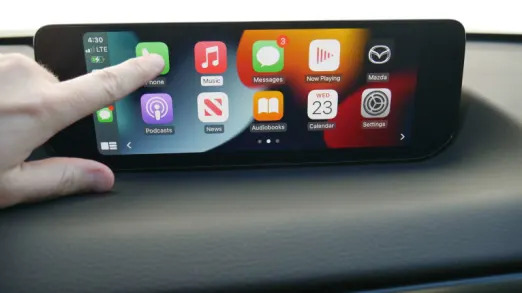
How big is the CX-5?
Although the CX-5 is smaller on the outside than the CX-50, they are virtually identical inside apart from some extra width in the CX-50. Either way, both are on the small end of the compact SUV segment. The CX-5 has adequate space inside for four occupants to ride around in relative comfort, but families may find they could use the sort of extra space provided by the Honda CR-V, Hyundai Tucson and Toyota RAV4. Kids are more likely to end up kicking the front seats from front-facing child seats, and those up front are more likely to need to scoot their seats up to make room for rear-facing child seats. We found that in our car seat comparison of four compact SUVs, the CX-5 was the least friendly in terms of car seat space and fitment, but it wasn’t a huge gap to those ahead.
The CX-5 has 30.9 cubic-feet of space behind its back seat, which is considerably less than those competitors. The CX-50 has 31.4 cubic-feet, so ditto. Not surprisingly, we found they can’t hold quite as much stuff as those competitors with bigger volumes (all links here go to their respective luggage tests): the Kia Sportage (39.6), Hyundai Tucson (38.6), Toyota RAV4 (37.5), 2023 Honda CR-V (36) and the Subaru Forester (between 33 and 35 depending on options). Nevertheless, the CX-5 does represent a clear upgrade over various subcompact SUVs like Mazda’s CX-30.
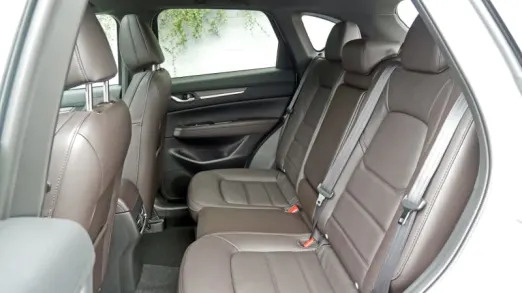
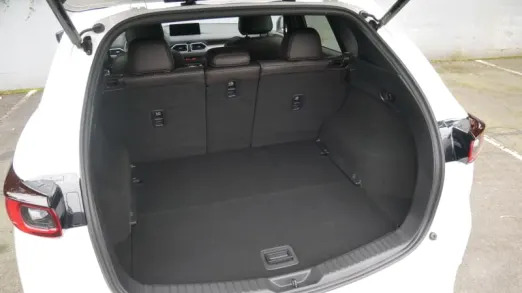
What are the CX-5 fuel economy and performance specs?
Trim levels with 2.5 Turbo in their name feature a 2.5-liter turbocharged inline-four good for 227 hp and 310 lb-ft of torque. It’ll do 256 hp on 93 octane if you live in a place that sells that and you feel like paying more for gas. Either way, this engine produces the sort of energetic acceleration that few others in the segment can match, including none of those competitors above. It too is paired with a six-speed automatic and all-wheel drive. Fuel economy drops further down to 22 mpg city, 27 mpg highway and 24 mpg combined.
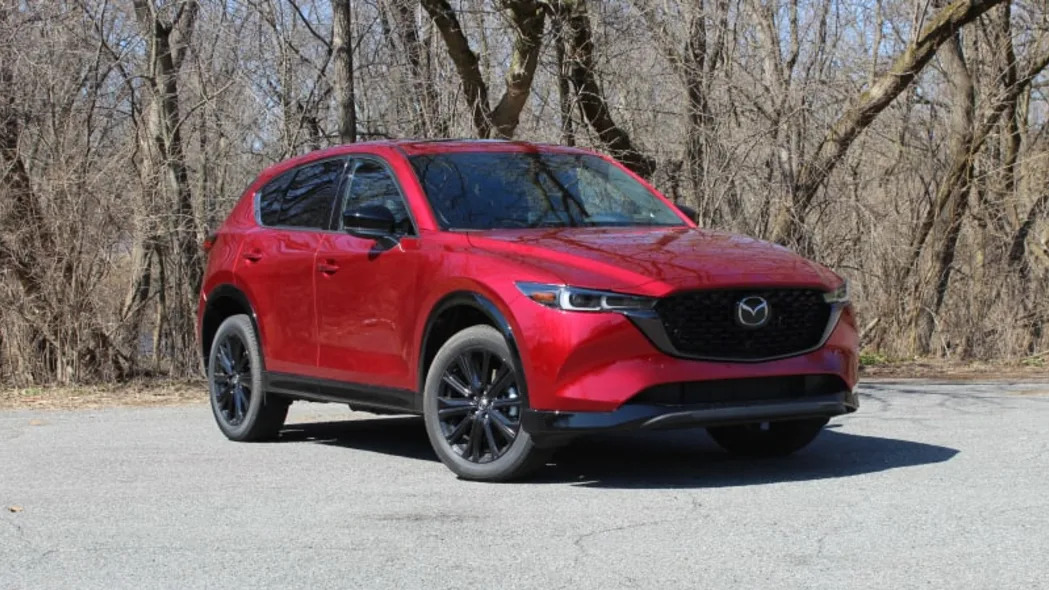
What’s the CX-5 like to drive?
Part of its dynamic prowess comes from the fact that G-Vectoring Control Plus, technology exclusive to Mazda, uses engine torque to shift weight onto the front wheels just as turn-in is initiated. That provides more grip on the turning wheels, and while it’s most noticeable in poor road conditions, it further instills the driver with a calm assurance on the curviest of roads even when surfaces are dry. It can also apply the outside wheel’s brake, which guides the vehicle with the sort of smooth control typically reserved for sports sedans.
What other Mazda CX-5 reviews can I read?
2019 Mazda CX-5 Luggage Test | How much fits in the trunk
See how much luggage can fit in the CX-5’s cargo area.
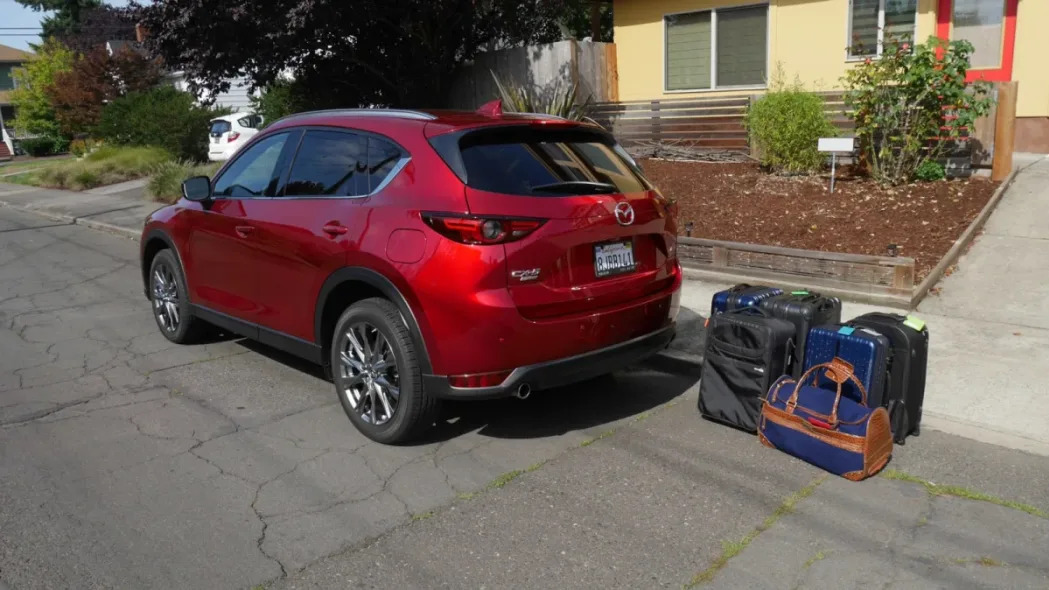
Car seat test: Mazda CX-5 vs Toyota RAV4 vs Subaru Forester vs (previous-generation) Honda CR-V
We take a look at how easy it is to install child seats in four of the best compact SUVs, along with how much space there is for them.
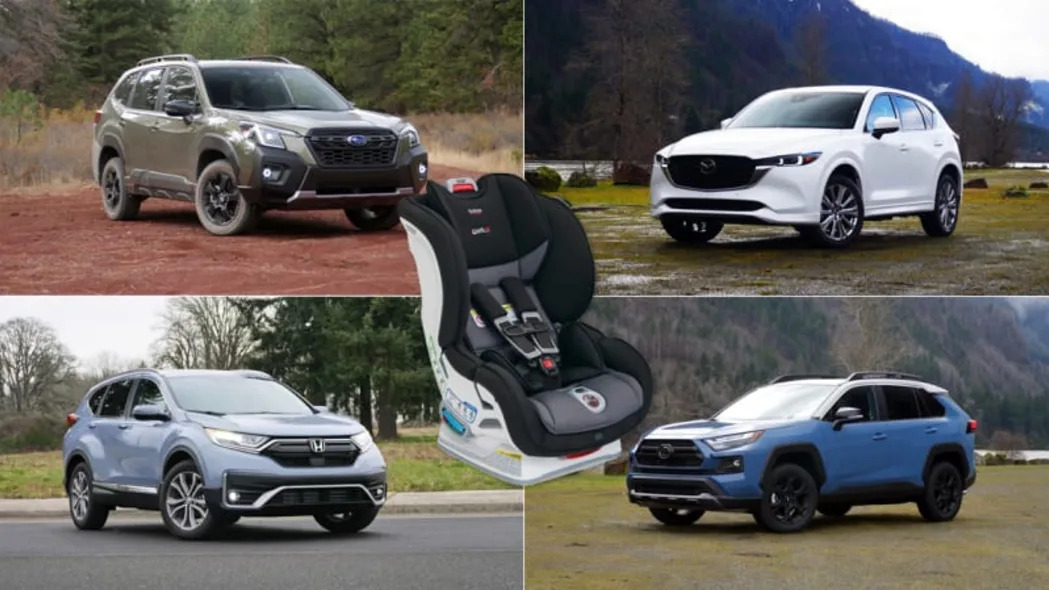
2019 Mazda CX-5 Turbo Drivers’ Notes Review | More power, more love
Our first time driving the CX-5 Turbo’s engine. The car has been updated since then, but our overall impressions of the turbo engine remain the same.
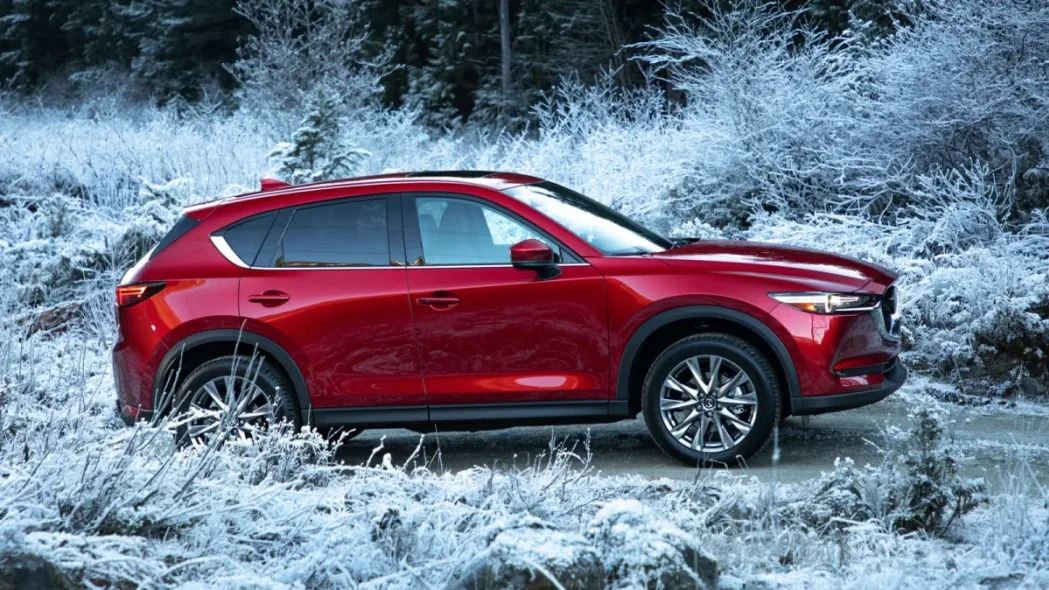
What is the 2024 CX-5 price?
The CX-5 pricing starts a bit higher than competitors, but it also comes standard with all-wheel drive, and thanks to starting off with the higher S Select trim level for 2024, likely more equipment as well. Extra niceties include rear privacy glass, auto-leveling lights, proximity entry, dual-zone climate control, leatherette upholstery, heated front seats with six-way power driver adjustment and manual passenger height adjustment, a six-speaker sound system and two rear USB ports.
Some key items, though: The Carbon Edition is mostly an appearance package on top of the Preferred that adds black wheels and trim, unique Polymetal Gray paint and a red interior option. The Carbon Turbo offers a special Zircon Sand Metallic with Terracotta leather mixed with black faux suede. Sport and Off-Road drive modes also show up starting with the Premium, while the Turbo trims get slightly different styling and leather upholstery.
Pricing for the various 2024 Mazda CX-5 trim levels after the $1,375 destination fee is below, with each of their respective price changes from 2023:
S Select: $30,675 ($800)
S Preferred: $32,025 ($470)
S Carbon Edition: $33,325 ($850)
S Premium: $35,275 ($900)
S Premium Plus: $37,875 ($1,000)
Carbon Turbo: $38,375 (new)
Turbo Premium: $39,175 ($950)
Turbo Signature: $41,975 ($950)
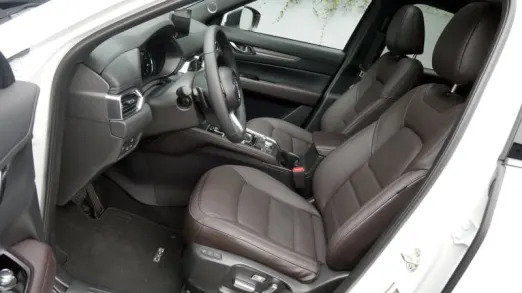
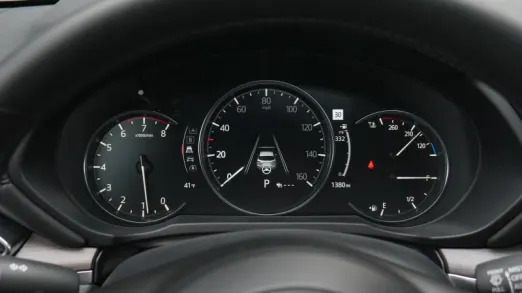
What are the CX-5 safety ratings and driver assistance features?
Every CX-5 includes forward collision warning with automatic emergency braking and pedestrian detection, lane-departure warning, lane-keeping assist, adaptive cruise control, and blind-spot and rear cross-traffic warning systems. The latter two are usually found on the upper trim levels of competitors. The range-topping Signature adds automatic rear emergency braking, a driver inattention warning system and low-speed steering assist when using adaptive cruise control (Traffic Jam Assist).
The federal government gave the CX-5 top five-star rating for overall, frontal and side crash worthiness. It got a typical four-star rollover rating. The Insurance Institute for Highway Safety named it a Top Safety Pick+ for its best-possible ratings in all pertinent crash tests and for its accident avoidance tech. The CX-5 was also the only compact SUV, period, to get the best-possible rating of “Good” in the newer, tougher IIHS side crash test (it does not yet count toward Top Safety Pick qualifications).

